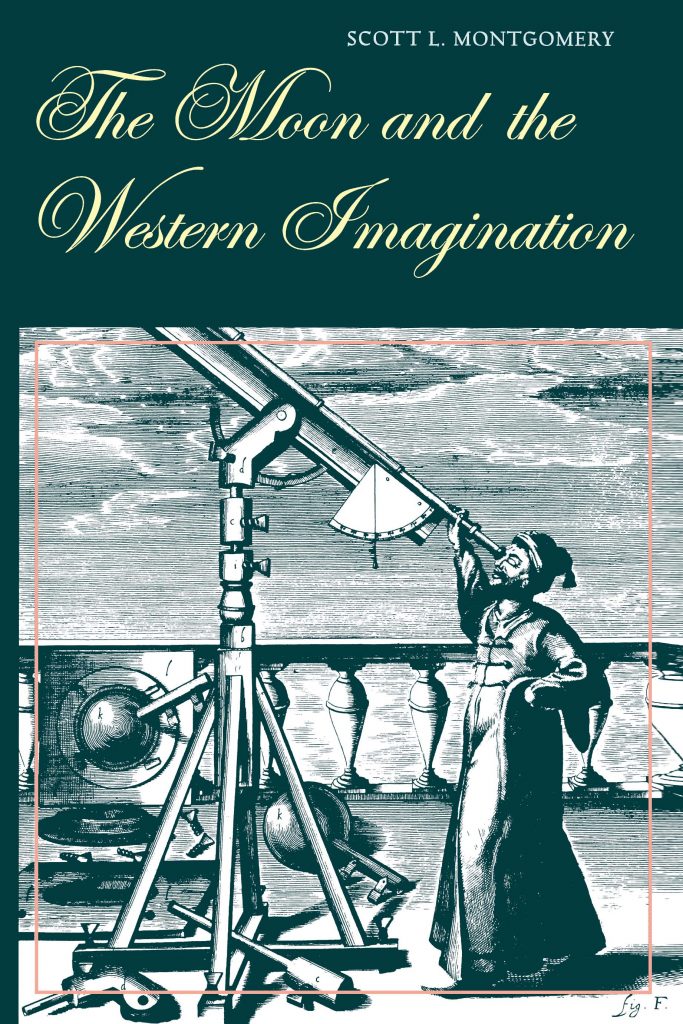The Moon and the Western Imagination
Paperback ($27.95), Ebook ($27.95)
Buy
The Moon is at once a face with a thousand expressions and the archetypal planet. Throughout history it has been gazed upon by people of every culture in every walk of life. From early perceptions of the Moon as an abode of divine forces, humanity has in turn accepted the mathematized Moon of the Greeks, the naturalistic lunar portrait of Jan van Eyck, and the telescopic view of Galileo.
Scott Montgomery has produced a richly detailed analysis of how the Moon has been visualized in Western culture through the ages, revealing the faces it has presented to philosophers, writers, artists, and scientists for nearly three millennia. To do this, he has drawn on a wide array of sources that illustrate mankind's changing concept of the nature and significance of heavenly bodies from classical antiquity to the dawn of modern science.
Montgomery especially focuses on the seventeenth century, when the Moon was first mapped and its features named. From literary explorations such as Francis Godwin's Man in the Moone and Cyrano de Bergerac's L'autre monde to Michael Van Langren's textual lunar map and Giambattista Riccioli's Almagestum novum, he shows how Renaissance man was moved by the lunar orb, how he battled to claim its surface, and how he in turn elevated the Moon to a new level in human awareness. The effect on human imagination has been cumulative: our idea of the Moon, and therefore the planets, is multilayered and complex, having been enriched by associations played out in increasingly complicated harmonies over time. We have shifted the way we think about the lunar face from a "perfect" body to an earthlike one, with corresponding changes in verbal and visual expression.
Ultimately, Montgomery suggests, our concept of the Moon has never wandered too far from the world we know best—the Earth itself. And when we finally establish lunar bases and take up some form of residence on the Moon's surface, we will not be conquering a New World, fresh and mostly unknown, but a much older one, ripe with history.
Scott Montgomery has produced a richly detailed analysis of how the Moon has been visualized in Western culture through the ages, revealing the faces it has presented to philosophers, writers, artists, and scientists for nearly three millennia. To do this, he has drawn on a wide array of sources that illustrate mankind's changing concept of the nature and significance of heavenly bodies from classical antiquity to the dawn of modern science.
Montgomery especially focuses on the seventeenth century, when the Moon was first mapped and its features named. From literary explorations such as Francis Godwin's Man in the Moone and Cyrano de Bergerac's L'autre monde to Michael Van Langren's textual lunar map and Giambattista Riccioli's Almagestum novum, he shows how Renaissance man was moved by the lunar orb, how he battled to claim its surface, and how he in turn elevated the Moon to a new level in human awareness. The effect on human imagination has been cumulative: our idea of the Moon, and therefore the planets, is multilayered and complex, having been enriched by associations played out in increasingly complicated harmonies over time. We have shifted the way we think about the lunar face from a "perfect" body to an earthlike one, with corresponding changes in verbal and visual expression.
Ultimately, Montgomery suggests, our concept of the Moon has never wandered too far from the world we know best—the Earth itself. And when we finally establish lunar bases and take up some form of residence on the Moon's surface, we will not be conquering a New World, fresh and mostly unknown, but a much older one, ripe with history.
"This erudite but accessible account surveys human thought through the ages to show that even in the 20th century, our modern image of the moon retains connotations far beyond its matter-of-fact identity as a cold, rocky sphere." —Science News
"[A] work of painstaking scholarship. . . . It is fascinating to see how each era viewed the moon in terms of the religious and philosophical climate of the period." —Choice
"With humankind's thoughts, feelings and beliefs projected upon the Moon as its focus, this wonderful book—masterful in scope, rich in detail, and a pleasure to read—takes the reader on a sometimes surprising and often fascinating and enlightening journey across the arts and sciences." —Leonardo
"Montgomery stitches a story of religious allegory, scientific inquiry and artistic insight. . . . Beneath the easy-reading style lies a work of substance that is a narrow but penetrating contribution to cultural history." —Publishers Weekly
"[A] work of painstaking scholarship. . . . It is fascinating to see how each era viewed the moon in terms of the religious and philosophical climate of the period." —Choice
"With humankind's thoughts, feelings and beliefs projected upon the Moon as its focus, this wonderful book—masterful in scope, rich in detail, and a pleasure to read—takes the reader on a sometimes surprising and often fascinating and enlightening journey across the arts and sciences." —Leonardo
"Montgomery stitches a story of religious allegory, scientific inquiry and artistic insight. . . . Beneath the easy-reading style lies a work of substance that is a narrow but penetrating contribution to cultural history." —Publishers Weekly
 The University of Arizona Press
The University of Arizona Press

